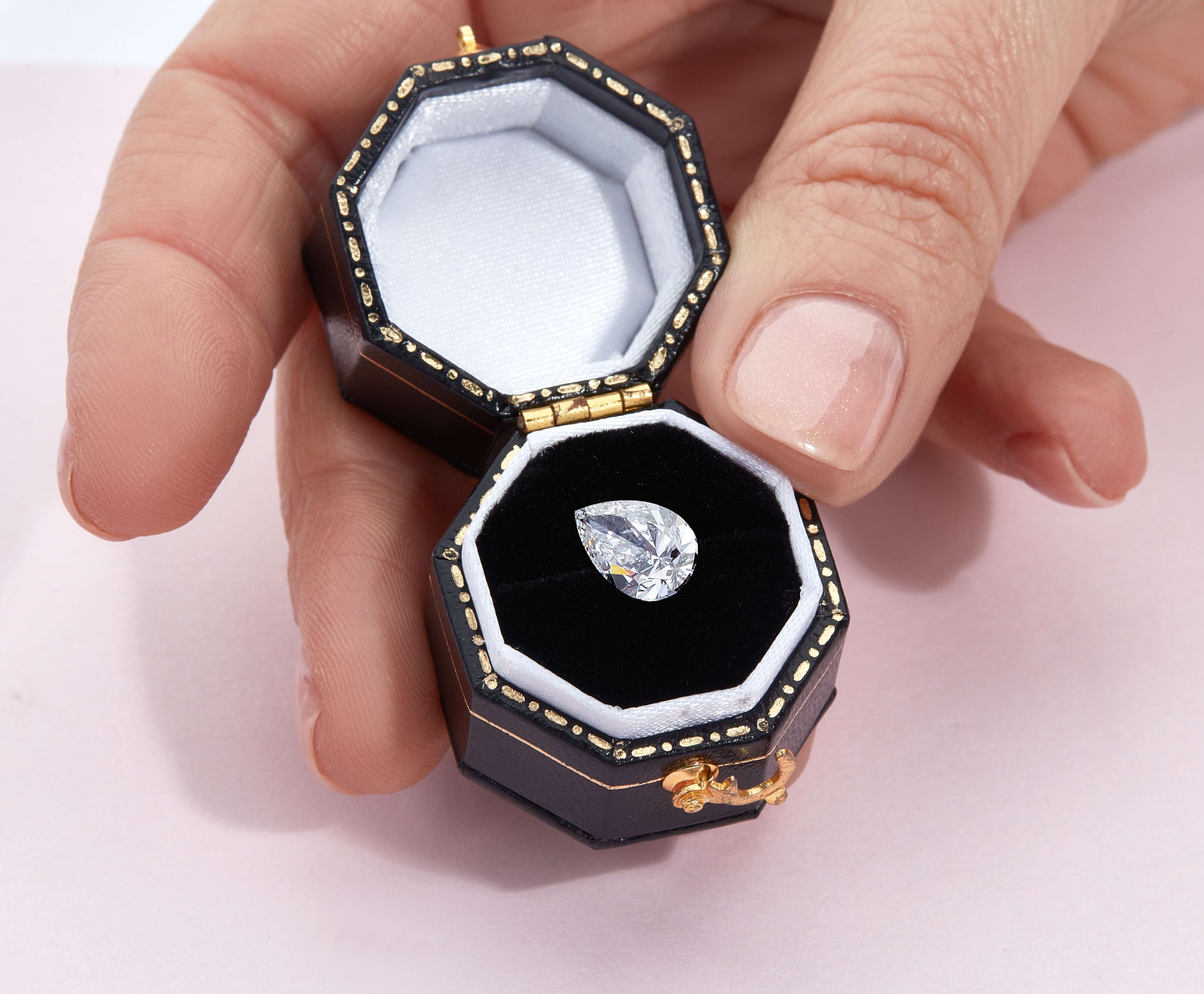When it comes to choosing diamonds, what’s the first question most people ask? ‘How many carats is it?’ Because that signifies the diamond’s size and value, right? WRONG! Far too many people get caught up in carats…when the ultimate beauty of a diamond lies somewhere else.
Read on to discover how to find a diamond that knocks ‘rocks’ off the rest…
Diamonds are graded by those 4 all-important ‘C’s – Carat, Colour, Clarity and Cut. Each one plays an essential role in defining a diamond’s quality but to quote Orwell - ‘Some are more equal than others’.
To find the best balance, it’s important to have a good understanding of the 4 C’s and how they interact with each other…
COLOUR
When we talk about the colour of a diamond, less is most definitely more!
The GIA (the Gemological Institute of America, an independent, certification authority) grades diamonds in terms of how colourless they are – ranging from a ‘D’ (colourless) to a ‘Z’ (noticeably yellow or brown).
The differences between one colour grade and the next are very subtle but can dramatically affect a diamond’s value. It’s also worth noting that once a stone has been set in place, it is that much harder to detect colour in it.
So, as long as you keep the colour above J, the naked eye is unlikely to notice any visible colour, especially if it’s beautifully cut.
CLARITY
We’re all convinced that the perfect diamond should be flawless. But in reality, flawless diamonds are very rare and therefore very, very expensive.
A diamond’s clarity is graded by the GIA according to its number of inclusions or blemishes. At the very top of the scale is ‘Flawless’ (FL), followed by ‘Internally Flawless’ (IF).
Next on the scale are two categories of ‘Very, Very Slightly Flawed’ (VVS1 and VVS2) and two of ‘Very Slightly Flawed’ (VS1 and VS2).
All diamonds at this end of the scale are pricey as their tiny flaws are only visible under considerable magnification.
So, what about ‘Slightly Impaired’ diamonds (SI1/S12/SI3)? Yes, these diamonds may have flaws but bear in mind that they tend to be invisible to the naked eye. So, if you’re looking for a beautiful diamond at a sensible price, the key is to look for an SI diamond that is ‘eye clean’ (where flaws can only be seen with a magnifying glass or microscope).
Having said that, even diamonds with more flaws can be stunning if you can only spot them when holding the diamond against your eye. The moral of the story – don’t get too hung up on clarity. If you can’t SEE the imperfections, do they really matter?
CARAT
Carat is the most visible C but despite popular belief, it does not relate to the size of the stone but to its weight. You can have two diamonds that are the exact same weight but depending on their cut, one may appear considerably larger than the other.
The shape of a diamond can also change its appearance in size. Elongated shapes such as a marquis or oval hold most of their weight in the table (the top part of the stone) so when looking down, the stone will appear larger than in other shapes.
And a diamond’s beauty is also heavily influenced by other factors. A 5 carat diamond may sound very impressive but if it’s heavily included and dense in colour, it certainly won’t look impressive.
CUT
Which leaves us with ‘cut’. What is a diamond without sparkle? It’s just a transparent rock.
The cut, polish and symmetry of the stone determines how the light refracts through the diamond which gives it its fire, brilliance, and sparkle. Even a pristine 5 carat diamond with very few blemishes and little colour can look dull if it’s not been cut to an exceptional standard.
So, when looking for a diamond, my recommendation is to prioritise cut above everything else. Aim for the top of the GIA scale – Excellent (EX) - and you’re guaranteed a dazzling sparkle.
At Lottie Leigh, we source stones from diamond houses all over the world. In doing so, we ensure our clients find a stunning diamond of exceptional quality for the best possible value.
Want to know more?
To find out more about how “ The Diamond Proposal” works please book in a consultation.

